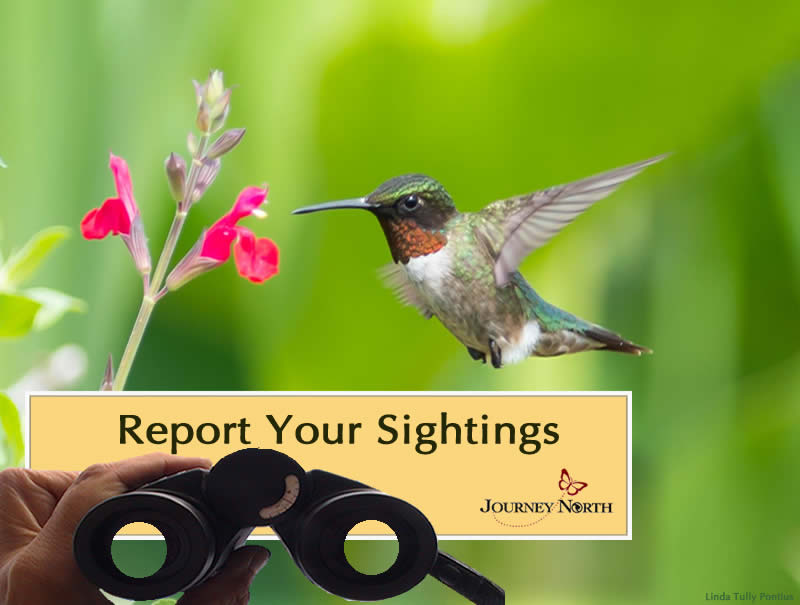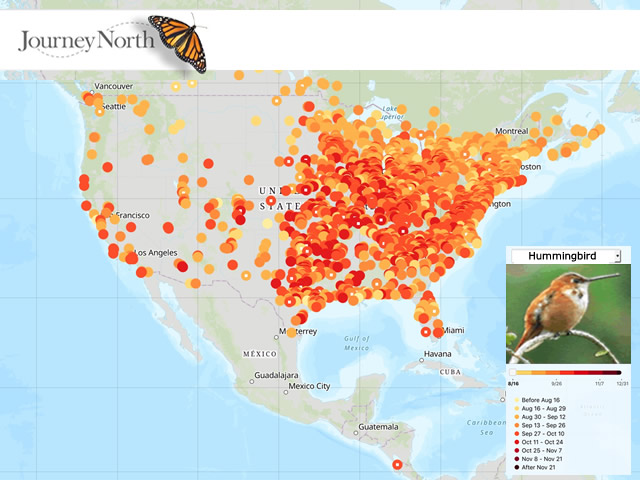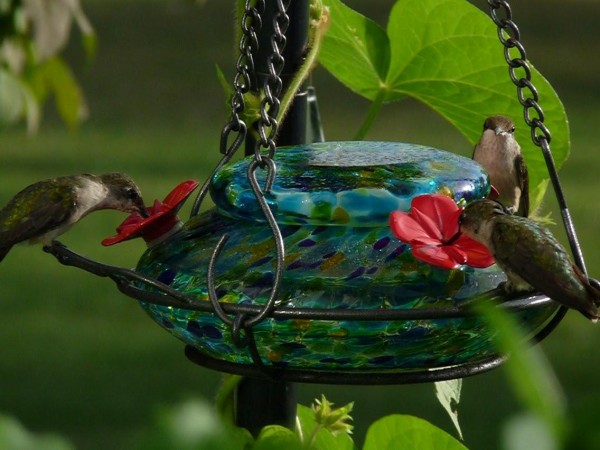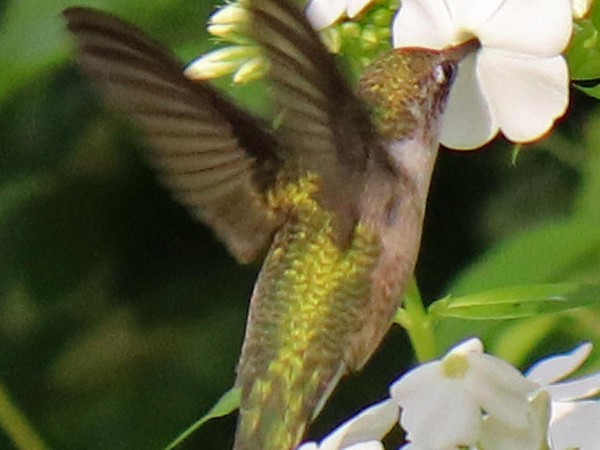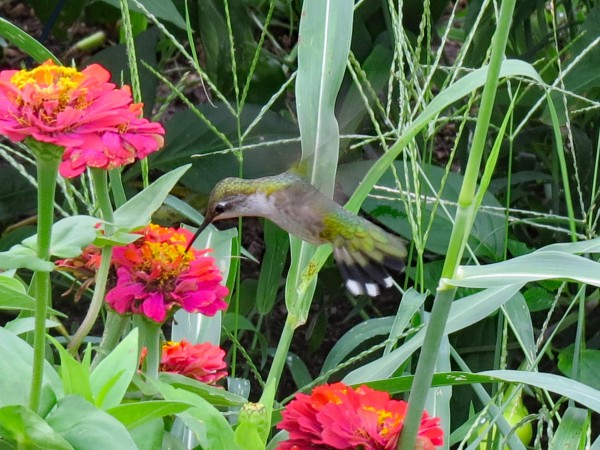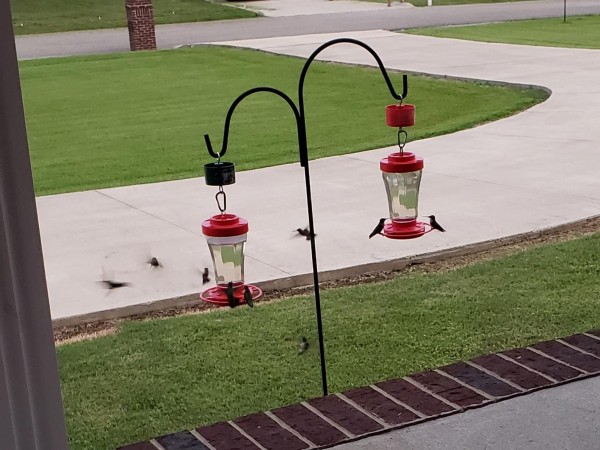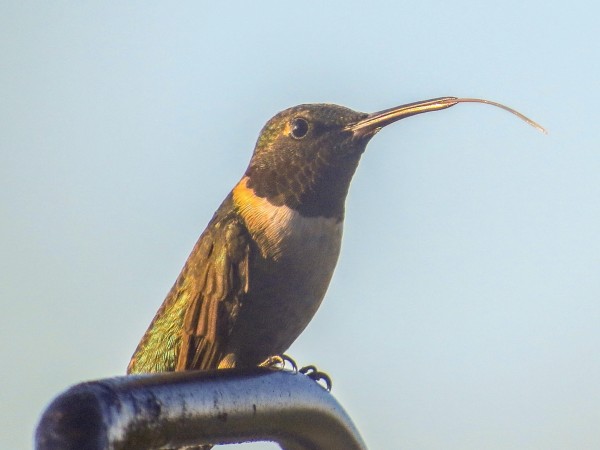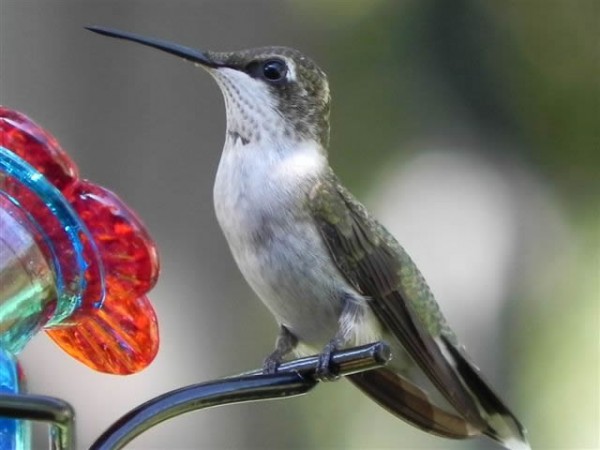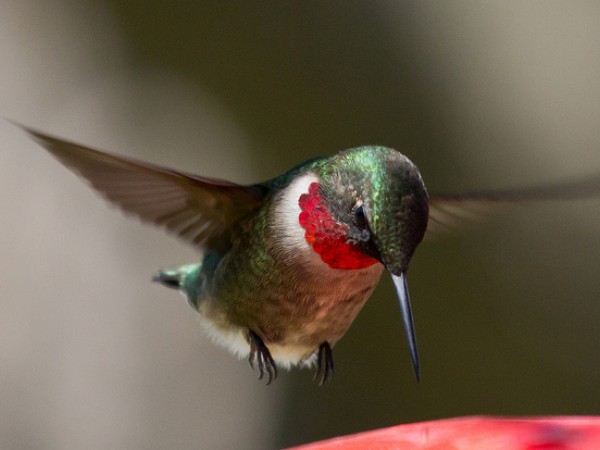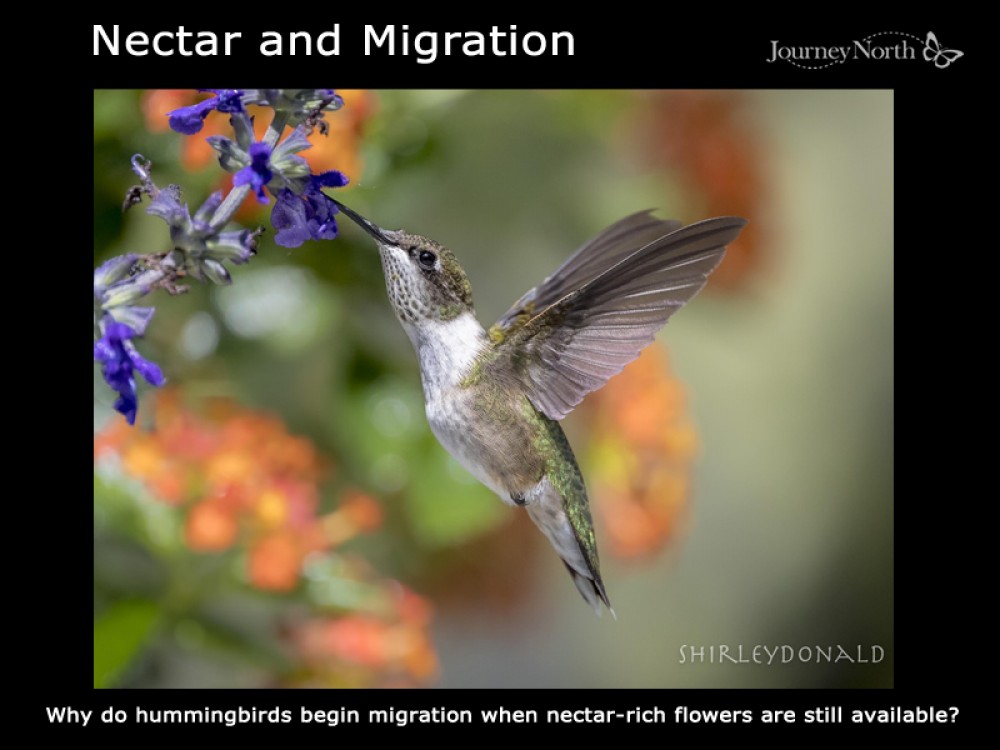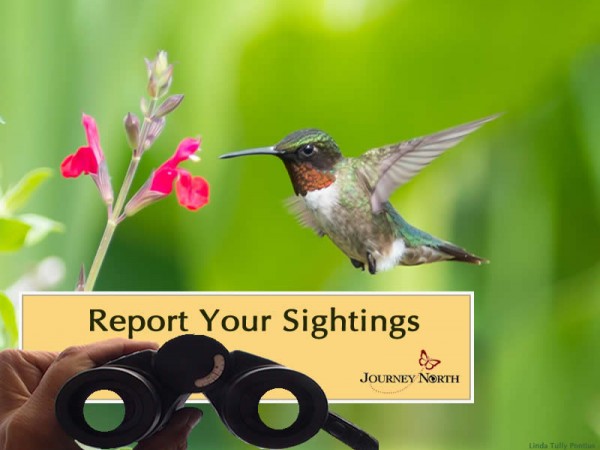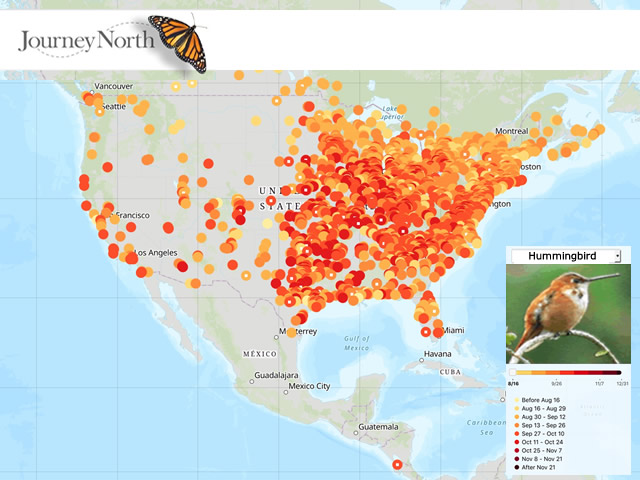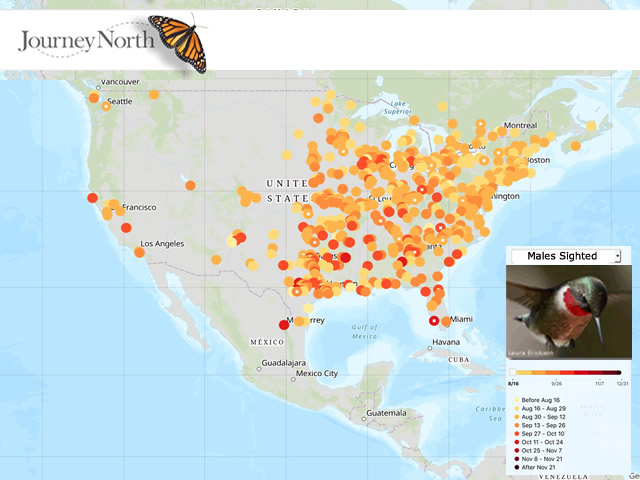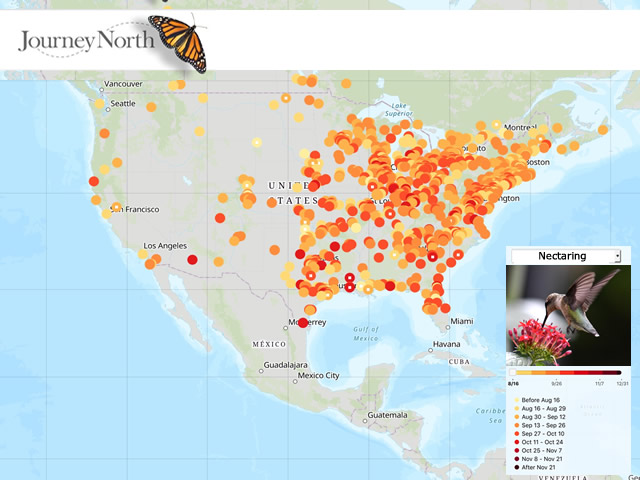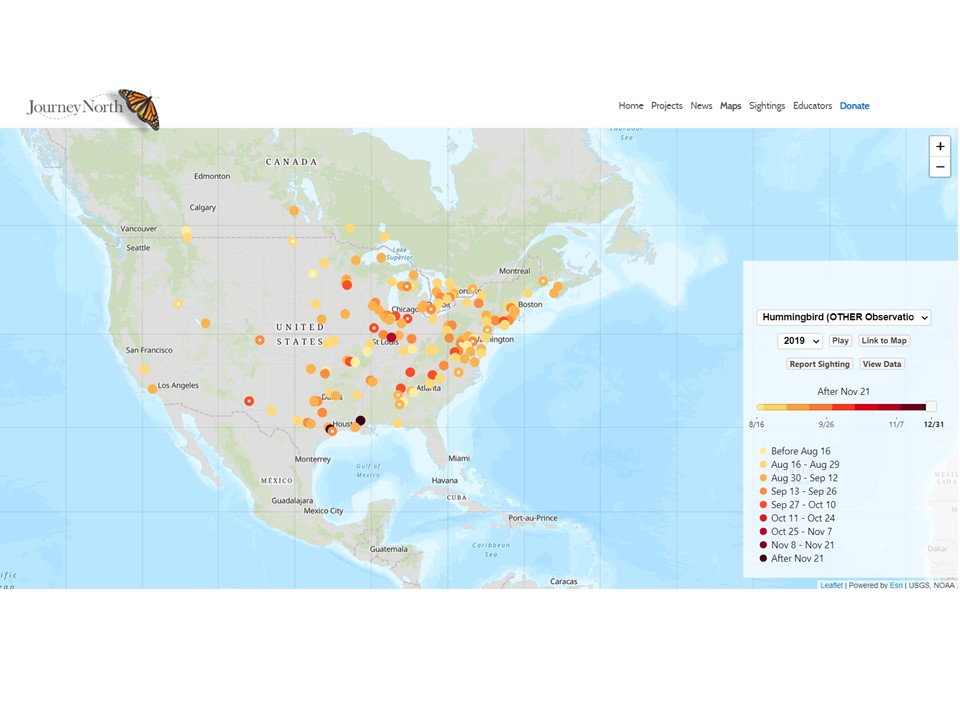Hungry Hummingbirds
Fall is under two weeks away and hummingbirds are packing on the calories as migration gains momentum.
Adult Males Becoming Scarce in the North
Fall is just around the corner as migration gains momentum. In the northern US and southern Canada, sightings of adult males continue to drop. Males migrate first, followed by females and juveniles. As a reminder, you can report males under the category: Fall: Hummingbird Sighting (Adult Male). We are hoping for more reports of adult males to better determine "last seen" dates.
Deb in Trent Hills, ON: "More females visible – 8-10 possibly more –but just 1 or 2 males. Constant battles over 8 feeders. Heavy feeding between 5-8pm." (09/02/220)
Keith in Erieville, NY: "About 6 hummers around, all female or immature. Finally got a picture of this female at white phlox. Other colors of phlox around that they seem to like at this time. Many others flowering plants around, but phlox is the desired species at this time. 5 feeders are also being used, but usage is down compared to a few weeks ago." (09/06/2020)
Building Up Fat Reserves
Just before and throughout migration, hummingbirds feed intensely to build up necessary fat reserves to sustain them for the hundreds or even thousands of miles they have to fly to reach overwintering grounds.
Susan in Red Wing, MN: "3 Hummingbirds still hanging around nectaring on a variety of flowers in my garden." (09/06/2020)
Leah in Bluff City, KS: "We have seen hummingbirds for about 2 1/2 weeks now and have seen 4 at one time around the feeders. I have seen them nectaring on zinnias, cosmos, trumpet vine, and agastache. (09/08/2020)
Numbers Swelling in Southern US
Ruby-throated Hummingbird numbers are swelling in the southern US as migratory males and long-term summer residents overlap and compete for resources. Journey North citizen scientists are noting increased activity at feeders.
Johanna in Smithville, TN: "It's a feeding frenzy; especially in the late afternoon and evening. Too many to get an exact count and have both male and female. I have 4 feeders out. You can tell they are gearing up for their journey south." (09/02/2020)
Erma in Texarkana, TX: "Seeing both male and females in 1, 2 and 3 at a time. Numerous sighting all day. Much more than normal." (09/06/2020)
Out West
Juvenile and female Rufous Hummingbirds are still being reported while the majority of adult males have made their way south.
Mary in Summer Lake, OR: "At least 2 Rufous and 1 Anna's , all immature, visiting feeders and flowers." (09/02/2020)
Sue in Fernie, BC: "Female Rufous sat on the clothesline, had a quick sip from feeder and off she went." (09/04/2020)
Stopover Sites
Migration is a perilous time of life. Migrating hummingbirds must continue to find food and nectar to fuel their long journey. How do they decide where to stop? Which resources are important? How long do they stay? Your reports help us better understand stopover ecology to answer questions like these. High quality stopover sites are critical for successful migration.
Take a tour of your neighborhood with the eyes of a migrating hummingbird. Can you identify welcoming stopover sites where hungry hummers can rest and refuel?
To help migrating hummingbirds, you can:
- Continue to maintain your hummingbird feeders until temperatures drop below freezing.
- Continue to nurture your pollinator gardens. Next year, consider planting brightly-colored native flowers with long tube shapes. Remember hummingbirds are attracted to the bright colors not smell. Follow this link to just a few planting suggestions: Photo Gallery of Fall Nectar Sources.
- Continue reporting to Journey North.
Fall Migration 2020
Report at least once per week as long as hummingbirds are present. Do not report when you no longer see them.


